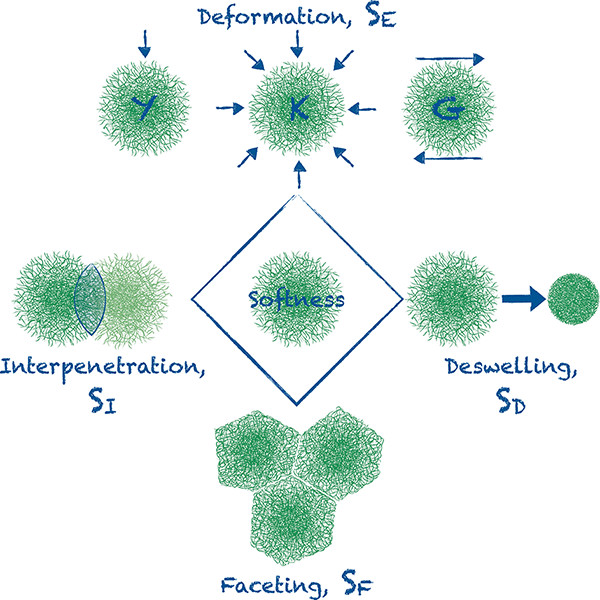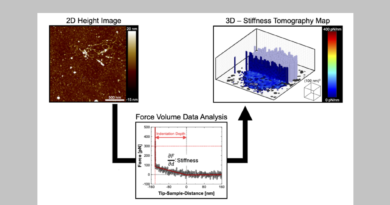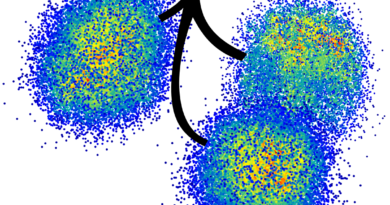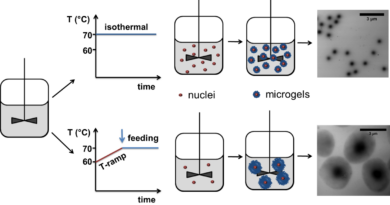How Softness Matters in Soft Nanogels and Nanogel Assemblies
Softness plays a key role in determining the macroscopic properties of colloidal systems, from synthetic nanogels to biological macromolecules, from viruses to star polymers. However, we are missing a way to quantify what the term “softness” means in nanoscience. Having quantitative parameters is fundamental to compare different systems and understand what the consequences of softness on the macroscopic properties are. Here, we propose different quantities that can be measured using scattering methods and microscopy experiments. On the basis of these quantities, we review the recent literature on micro- and nanogels, i.e. cross-linked polymer networks swollen in water, a widely used model system for soft colloids. Applying our criteria, we address the question what makes a nanomaterial soft? We discuss and introduce general criteria to quantify the different definitions of softness for an individual compressible colloid. This is done in terms of the energetic cost associated with the deformation and the capability of the colloid to isotropically deswell. Then, concentrated solutions of soft colloids are considered. New definitions of softness and new parameters, which depend on the particle-to-particle interactions, are introduced in terms of faceting and interpenetration. The influence of the different synthetic routes on the softness of nanogels is discussed. Concentrated solutions of nanogels are considered and we review the recent results in the literature concerning the phase behavior and flow properties of nanogels both in three and two dimensions, in the light of the different parameters we defined. The aim of this review is to look at the results on micro- and nanogels in a more quantitative way that allow us to explain the reported properties in terms of differences in colloidal softness. Furthermore, this review can give researchers dealing with soft colloids quantitative methods to define unambiguously which softness matters in their compound.

Andrea Scotti, M. Friederike Schulte, Carlos G. Lopez, Jérôme J. Crassous, Steffen Bochenek, Walter Richtering
DOI paper: https://pubs.acs.org/doi/full/10.1021/acs.chemrev.2c00035



